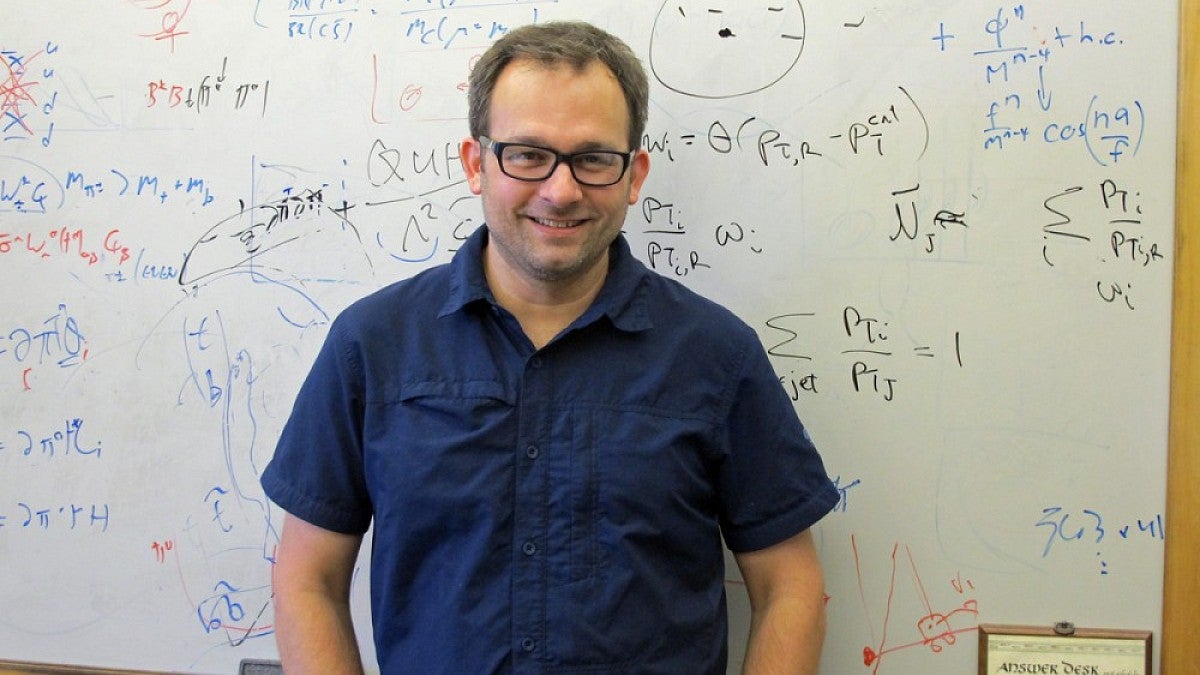The imprint of dark matter on the evolution of the universe is unmistakable, physicists say, but dark matter itself continues to evade direct detection. That may soon change.
An 18-member team of theoretical particle physicists, including the UO's Graham Kribs, has devised a new model of naturally stealthy dark matter that would have been easy to see amid interactions with ordinary matter in the extremely high-temperature plasma conditions of the early universe.
For papers soon to be published in Physical Review Letters and Physical Review D, the scientists — working as the Lattice Strong Dynamics Collaboration — applied theoretical and computational physics techniques to devise and study the new model. The papers were selected by both journals as the "Editor's Suggestion," denoting topics worthy of a close read.
"While we know that dark matter is indeed stealthy today, interaction with ordinary matter at early times is essential if the strikingly similar abundances of ordinary and dark matter today derive from a balancing act performed before the universe cooled," Kribs said. "The keys to stealth dark matter's split personality are its compositeness and the miracle of confinement."
Stealth dark matter, which carries no electrical charge, is composed of electrically charged constituents, much like the neutron that is composed of charged quarks. At high temperatures, these constituents are continually interacting with other quarks, photons and other particles of the standard model. At lower temperatures, however, they bind together to form a nearly invisible composite particle, Kribs said, as if trying to hide itself from the non-gravitational forces of nature.
Unlike a normal neutron, which is bound by the ordinary strong interaction, a stealthy neutron would have to be bound by a new and yet-to-be-seen strong interaction — a new dark force — the team argues in the papers.
Though electrically neutral overall, Kribs said, stealth dark matter particles can scatter light through its polarizability – the same property of neutral atoms that causes the sky to appear blue. The detection of dark matter particles through their polarizability requires underground experiments built to search for rare interactions with ordinary matter. The world’s most sensitive apparatus, the Large Underground Xenon experiment, based at the Sanford Underground Research Facility in Lead, South Dakota, may well be able to detect stealth dark matter in the near future, according to the theory.
Kribs and his colleagues are now actively investigating the detailed signatures of the model for the upcoming run of the Large Hadron Collider at CERN in Geneva, Switzerland. "Time will tell whether physicists using underground direct detection experiments or those operating the Large Hadron Collider will be the first to find evidence of — or rule out — this new stealth dark matter theory," he said.
The Lattice Strong Dynamics Collaboration was formed in 2007 to pursue theories with strong interactions using large supercomputers to simulate these theories on a space-time lattice. The group includes faculty and postdoctoral researchers from several national laboratories and U.S. universities. Kribs is the UO's sole member.
More detailed information on the research can be seen in a news release issued by the Lawrence Livermore National Laboratory.


